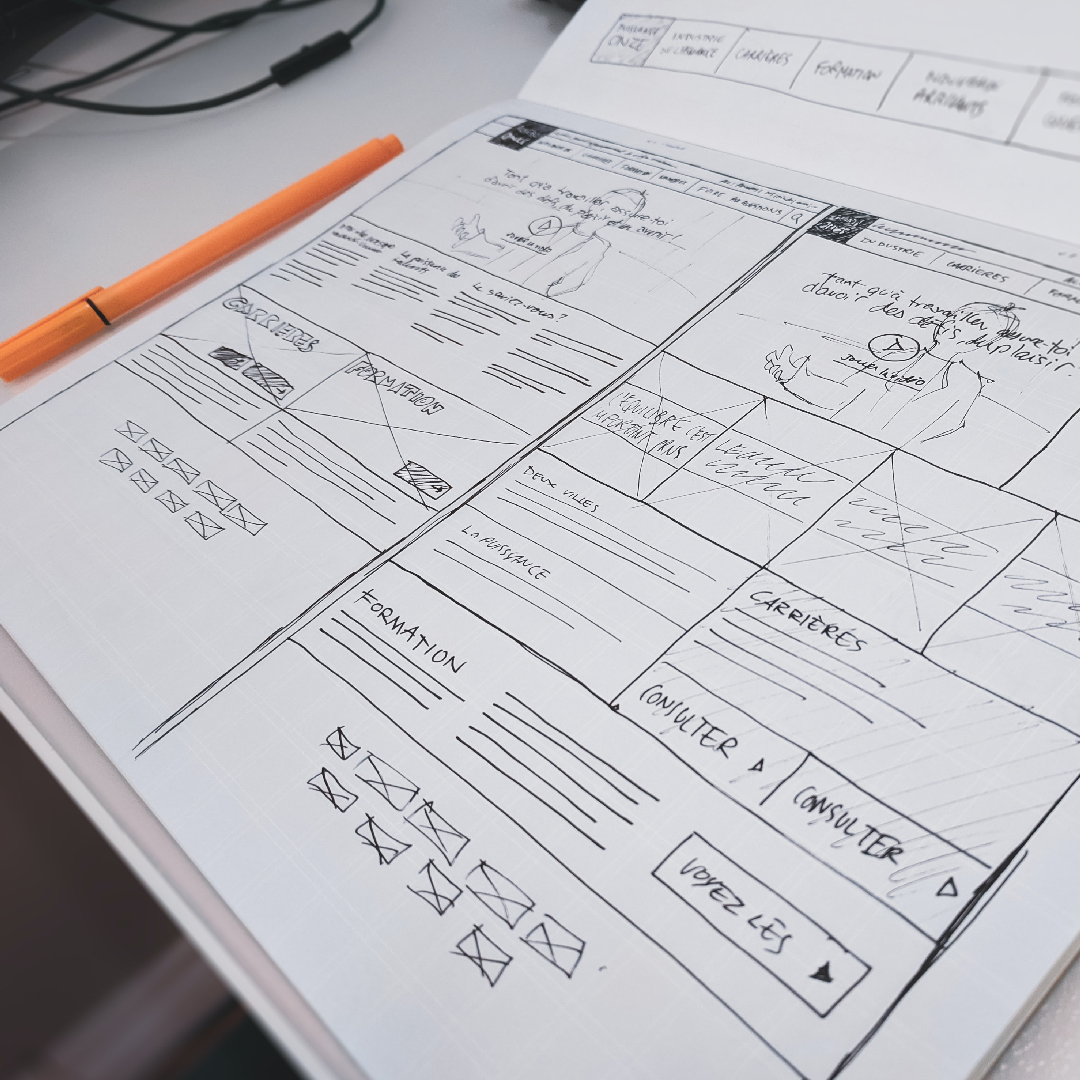Website Redesign in 2022: Keep These 5 Things in Mind!
Did you know – a poor web design can significantly hurt your traffic, conversions, and sales? A strategically planned and executed website redesign can not only help you gain traffic and drive sales but also enhance your overall online reputation. Irrespective of the size of your company and industry, it is imperative that you follow a structured approach to website redesign. Understanding what works, what doesn’t, and what you want to achieve will not only streamline the web development process but bring about a highly functional end product.
Whether you are collaborating with a web design and digital marketing agency, redesigning your site with in-house teams, or submitting a proposal to various stakeholders, this comprehensive guide can help you strategize the complete redesigning process and ensure that it is a huge success. Having worked with numerous organizations across different industry verticals on their website redesign, we have formulated a failproof step-by-step strategy to go about the designing process.
If you are a designer looking for some pro tips to improve your web design skills, here’s a quick read!
So, if you are considering the revamp of your web design, you are at the right spot! Whatever your reason to undertake the redesign plan, remember that it is a crucial project that plays a very important role in building your brand image. New studies have found that around 50% of consumers think that website design is critical to a business's overall brand. So, if you are initiating your website redesign process, buckle up! This guide gives you an in-depth look at how to approach your website revamp process. Let’s begin!
How often do I need to redesign my website?
According to a study by Business 2 Community, the average lifespan of a website is 1.5-2.5 years. Advanced technologies and innovative designs keep cropping up every now and then. And that is why this is the average time a web design looks fresh and updated on the internet.
However, remember, this timeframe is just a benchmark. It is up to you to find out what works best for your business.
Here are some questions you should ask yourself to determine how often you should redesign your website:
- Does this web design still represent our brand, our goals, and who we are as a company?
- Are you able to navigate your website and find everything easily or do encounter errors and long-page load times?
- Is the website able to convert a good amount of traffic?
- Is the website mobile-friendly?

5 things you need to keep in mind during a website redesign
1. Assess your website’s most valuable pages
Before launching into a complete redesign mode, ensure you have a well-defined roadmap of your complete web design ecosystem. Go through the wireframes and know which pages need to be handled carefully and which ones need to be completely rebuilt. One way to go about it is to assess the relationship between your traffic and conversions. You can utilize Google Analytics or any other tracking or analytics tools to identify the most and least valuable pages on your website.
On detailed assessment, you can categorize your web pages into 4 categories:
High traffic, high conversion pages
The most valuable pages on your website. You need to approach these pages with extra caution when redesigning the website.
- High traffic, low conversion pages
These pages have high traffic. However, something is stopping the conversions from happening. So, keep that in mind while making improvements. Since you are not risking conversions here, you can try to be a little experimental in web design.

- High conversion, low traffic pages
These pages are also important since they lead to conversions. So, here again, you need to approach the redesign carefully and make sure the changes do not affect the things that are already working.
- Low conversion, low traffic pages
These are the most risk-free pages on the website. You can truly experiment here with web designs and measure the changes without having to worry much about conversions.
2. Check who’s visiting your website
Now that you know which are your most visited pages, now you need to find out who is visiting those pages, and why. According to research by Google, there are 4 main intent types that drive people to a website –
- I-want-to-know type – curious to know about your brand and products.
- I-want-to-go type – they want to get in touch with you (look for a physical location they can go to.
- I-want-to-do type – they want to learn how to do something with your products/services.
- I-want-to-buy type – are ready to buy something from you.
Keeping in mind your customers’ visit intent while redesigning your website will help create a user-friendly web design. You can achieve that by creating customer personas – with the help of real demographic and psychographic data. This step helps you get a better idea about your target audience and modify your web development process accordingly.
3. Find out what stops your customers
This is one major aspect of your website redesign process – knowing what’s convincing customers to complete the actions they intended to do, and what’s stopping them along the way. Here’s what you need to check:
- Where users experience issues and get stuck
- What is working and what is not on each page
- What users like and dislike about the experience
- Whether your existing CTAs are working
- Is the experience different on desktop and mobile devices?
- What’s stopping people from converting?
This step is crucial because it will help make the connection between customer behavior and website performance. This assessment will help determine the elements that work in your web design and that don’t and formulate a design prototype that includes search engine optimization elements as well. To go about this step, you can use a combination of traditional analytics tools and internal sources along with specialized behavior analytics software. These tools include website heatmaps, session recordings, feedback widgets, on-site surveys, etc.
4. Determine ways to measure success with KPIs

Revenue-related metrics will bring you back to the main purpose of your redesign – to build a website that your target audience will love, and thus interact with.
Some factors include conversion rates, Average Order Value (AOV), Customer Lifetime Value (CLV), revenue, etc. Also, you can use qualitative metrics to understand the impact of your revamp.
For instance, data like the Net Promoter Score (NPS), Customer Satisfaction Score (CSAT), Customer Effort Score (CES), etc.
Assigning clear KPIs will help you determine whether your web design revamp was successful and by how much.
5. Know what to change, and how to test it
Once you have completed your research and created your web development strategy, it is time to start the designing process. But remember, the efficient approach is to focus on the smaller more impactful things first. Make changes to such aspects and test the results to understand the success of your redesign process. One way to go about is to conduct A/B testing. This is particularly beneficial if you have enough traffic to get significant statistical results.
But if you do not have enough traffic, you can use other ways to test the effectiveness of your new website design like running moderated usability testing sessions. You can conduct them both remotely and in person.
You can show the participants your new pages, let them interact with them, ask questions about their experience and find out the hurdles they faced on your website.

Final thoughts
Remember – web development is a never-ending process!
Consumer preferences keep evolving. And so does design standards, online technologies, and accessibility practices. Also, the designs that worked at the time of your revamp may no longer work in 2 years. So, make sure you keep track of what your customers are looking for over the internet and develop a web design process that fulfills those requirements. If you are all set to start your website revamp, here’s a quick guide to the latest web design techniques that can help build a great website for your business.
We hope this guide will enable you to make your web design project a productive and fruitful endeavor. If you need professional help to build a search engine optimized business website that incorporates the latest web design practices, we can help. Our web development solutions include digital and content marketing services that can help build a well-designed and well-optimized website that adheres to the latest industry standards. You can also hire our skilled developers and designers to strengthen your in-house team for your redesign project.
So, reach out to us to discuss your web development needs, or leave a comment below with your query!



